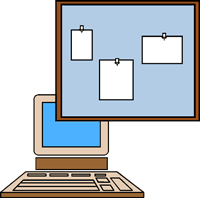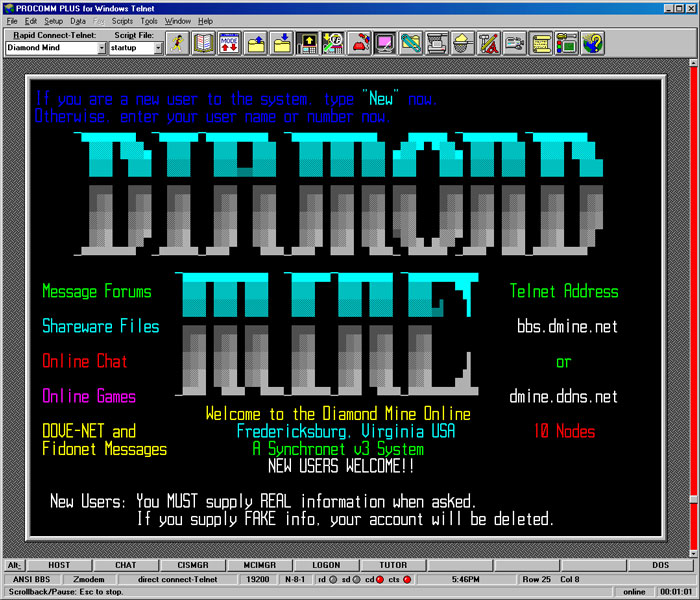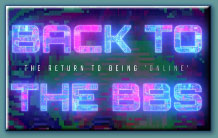 BBS Scene of the 90’s BBS Scene of the 90’s
What is a BBS? Back in the 90’s before the age of the Internet hit in full swing, connecting to a BBS or Computer Bulletin Board System was a great way connect up with other people, to play online games and share files.
What we did in the early 90’s was to connect our computer up to a modem which in turn was connected to our phone line. This was back when eveyone had what is called a “land line” in their homes. Your phone was in the home. Mobile phones were not as common as today. So, with that modem we would use our computer to dial into another computer that had been setup as a BBS (Bulletin Board System) for taking incoming calls. Often  the BBS’s only had one line and would limit how much time per day any one user could spend on that line so that other users could have a turn on the system. If you found a large BBS system you might be lucky in that it could have multiple phone lines for taking incoming calls, thus increasing your chance of getting in or at least allowing you more daily time than others with a single line. the BBS’s only had one line and would limit how much time per day any one user could spend on that line so that other users could have a turn on the system. If you found a large BBS system you might be lucky in that it could have multiple phone lines for taking incoming calls, thus increasing your chance of getting in or at least allowing you more daily time than others with a single line.
What Did We Do on a BBS?
On a BBS system once connected you could exchange files, chat with other users - usually via message boards - and play games. There were also BBS systems for specific needs such as customer support, etc.
I mostly used BBS systems for communicating with others on various topics via the message boards that would relay those messages around the world. There were many topics of discussion to choose from. My other main use of a BBS was to download files. This was a great way to find the latest DOS game, usually release as Shareware which allowed you to play part of the game before purchasing the whole game. You could also find some wallpaper images for your computer, or sound files or updated drivers or files of just about any type. It was the Internet before the Internet.
How Do You Connect in 2024?
Below is an example of connecting to a BBS called Diamond Mine BBS. This BBS has been in service since 1993. I recommend using ProComm Plus 3.0 for a great, authentic 1990’s ANSI display experience:

Using a tool like ProComm Plus 3.0 you can connect via telnet to BBS systems today, no need for a modem or land line for dialing. You can also use console clients like those common in Linux, however, you will be missing out on some of the fun since many of them are not great at displaying ANSI properly. For example, the colorful title of the Diamond Mine BBS in the screenshot above is done via ANSI graphics or ANSI art. It is a text based method of making images using very little bandwidth. Additionally, not many of the plain terminal apps will know how to properly handle Zmodem for file transfers, so if you want to upload or download files to/from a BBS, that will be more challenging. For these reasons I prefer to use ProComm Plus for full functionality just like in the 90’s! Now, I actually used a DOS based program in the early 90’s called Qmodem. But, I think those DOS based applications were never updated to work over a network connection, only via a modem and phone line. Thankfully ProComm Plus stuck around long enough at the beginning of the Internet rise to popularity that their tool can be used over the Internet using standard protocols like Telnet, FTP, etc. 
Today you can also use a modern BBS tool that supports ANSI graphics but can run natively on today’s Windows, Linux or Mac desktops. It’s called SyncTerm and the latest version is available on Gitlab: https://gitlab.synchro.net/main/sbbs
There are many, many other BBS’s out there still running and many that have come back online in recent years. You can download the latest BBS listing of all the BBS’s that are accessible via Telnet today by clicking on the Telnet BBS Guide graphic at the top of this page.
To learn more about BBSing, check out the excellent Back to the BBS Series on YouTube:
https://www.youtube.com/watch?v=n0OwGSX2IiQ
|




